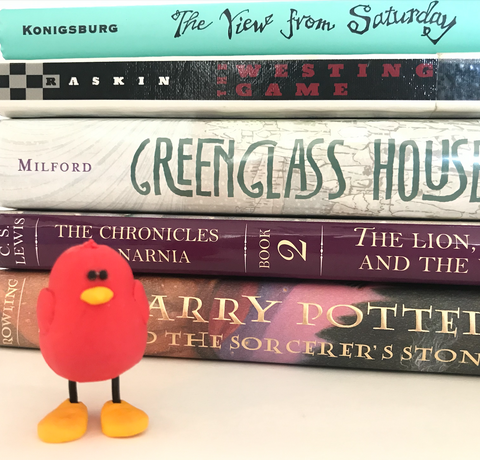Character Portraits
One of the simplest ways to help your kids connect visually with your read-aloud is to ask them to draw pictures of the characters as the appear in the text.
Why it works:
- When children are first beginning to listen to chapter books, we often give them the advice to, "Make a picture in your head." Drawing pictures of the characters, or even scenes in the story, is a great intermediate step; they must rely on their listening skills for details to base their drawings upon, but they have a visual product as a result.
- It builds community! We post our pictures on the wall as we draw and talk about the characters. Why did we draw them that way? Did you hear details I missed? As we collaborate to create a group of portraits, we're also strengthening our concept of ourselves as a reading community.
- We draw frames around our character portraits and use them to write about the characters. What are the details that we can't express through drawing? This is a great time to talk about character traits. You can also add to the description as you read the book; how does the character change or grow? This is a natural way to talk about character development.

Character Mapping
Character Mapping is an extension of character portraits; in fact, the first step is to make a character portrait for each of the main characters. Then, you'll draw connecting lines and use symbols to indicate relationships among the characters (channel your inner detective-show hero for this one!).

Here, we've used a chalkboard wall for this The View from Saturday character map. If you don't have a chalkboard wall, you'll want to grab our free printable to make any wall or bulletin board into a character map! You can print as many copies of the character tiles as you need, and even use color coding to indicate groups of characters.
We've started making a character map for The Lion, the Witch, and the Wardrobe using our printable. Take a look!

Character mapping works best for books that have lots of characters with complex inter-relationships. Because of this, we find it's usually a strategy that we use with our older kids. However, if you're reading to a range of ages, you can easily incorporate your younger kiddos by asking them to draw the characters, and then having the older kids diagram the relationships. It's a great collaborative activity, and it will help everyone keep track of the details and connections that are sometimes hard to remember during read-aloud.
One genre that naturally lends itself to character mapping is mystery. Some of our favorite books to use a character map for are in the photo below.

If you try character portraits or character mapping with your family, drop us a comment and let us know how it goes!


Leave a comment: